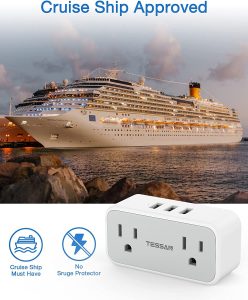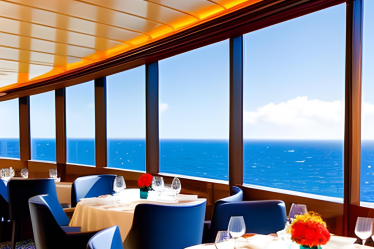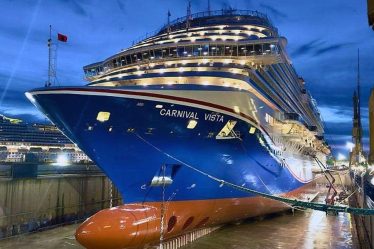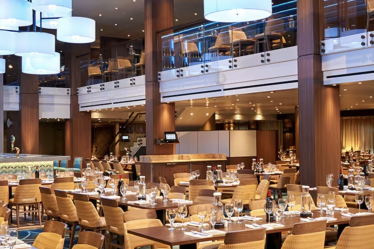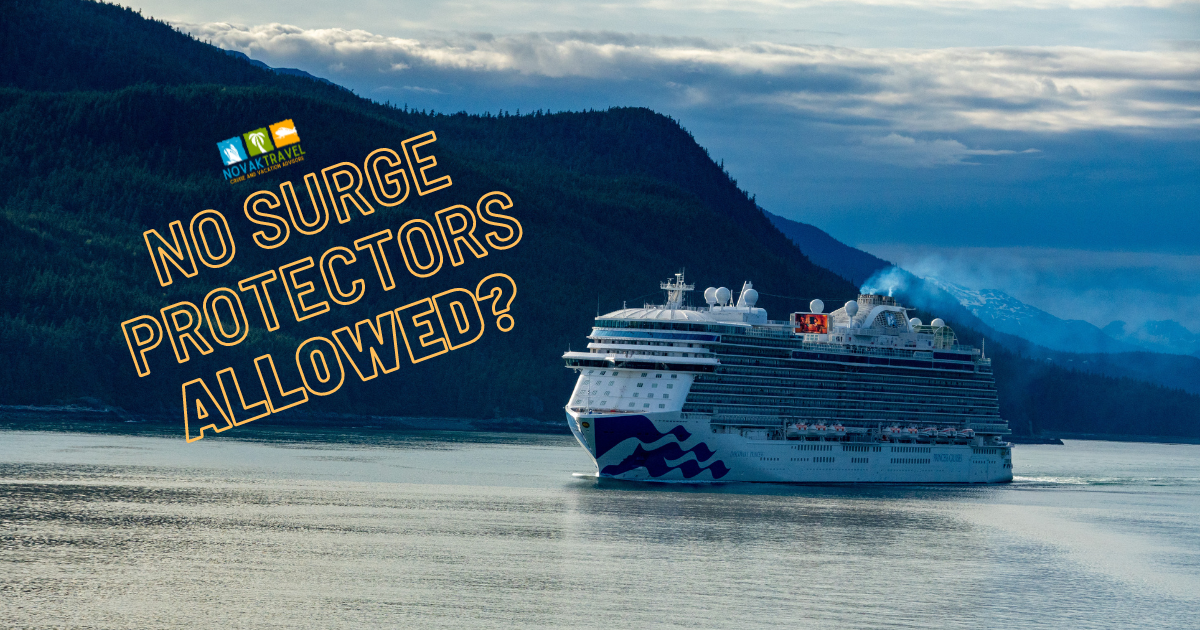
The short answer: Electrical circuits on cruise ships differ significantly from those in residential homes.
Surge protectors are prohibited on cruise ships due to the increased fire risk they pose. This hazard arises because typical surge protectors only break the circuit on the “live” wire, while both “live” and “neutral” wires carry current on a cruise ship.
Household Electrical Circuits
This is a simplified explanation of how electricity generally works in residential settings.
Electrical outlets provide the connection points for devices to access power from the electrical grid. Outlets have “hot” and “neutral” slots, and some have a third “grounding” slot. In both two-prong and three-prong outlets, only one wire carries a live current.
In home outlets, power flows from hot to neutral. When a device is plugged in, it completes the circuit between these two slots, allowing electricity to flow through and power the device. Surge protectors are designed to interrupt this flow when they detect an excessive charge that could overwhelm the system.
Cruise Ship Electrical Systems
Cruise ship wiring is fundamentally different. Ships use an ungrounded system, where both live and neutral wires carry current. The live wire carries +60 volts, and the other conducts -60 volts, resulting in a 120-volt potential. This means both prongs can deliver a shock, unlike land-based circuits.
Cruise ships also use a “floating” ground, where the wiring ground is connected but not truly grounded to the earth.
The Issue with Surge Protectors on Cruise Ships Surge protectors create problems because they only disrupt one of the live currents in a ship’s electrical system. This can cause an imbalance in voltage between power conductors, leading to overheating and potential fires.
The Danger of Surge Protectors: Two Scenarios These scenarios illustrate the risks associated with surge protectors on cruise ships.
- Without a Surge Protector: If a device with a loose wire, such as a toaster or light, touches the appliance’s metal cover, it would ground to the middle wire connected to the hull, safely dissipating the current. The electrical crew would notice the disruption and address the issue.
- With a Surge Protector: In the same situation, a surge protector would detect the problem and trip, disconnecting the live wire. However, on a cruise ship, the “neutral” side of the circuit still carries 60 volts, creating a new circuit that channels the current into the hull. If the power spike persists, the remaining circuit could melt and potentially cause a fire.
The US Coast Guard’s 2013 Warning Following two separate fires on container vessels caused by failed surge protectors, the US Coast Guard issued a notice advising that surge protectors used on cruise ships must break both power conductors to prevent similar incidents.
While surge protectors enhance safety on land, they can increase fire risks on cruise ships. Instead, use power strips and outlet expanders without surge protection to ensure safety on your cruise. So what do you do? Make sure you get cruise ship approved power strips like this Cruise Safe Multi Plug Outlet Extender with USB.

